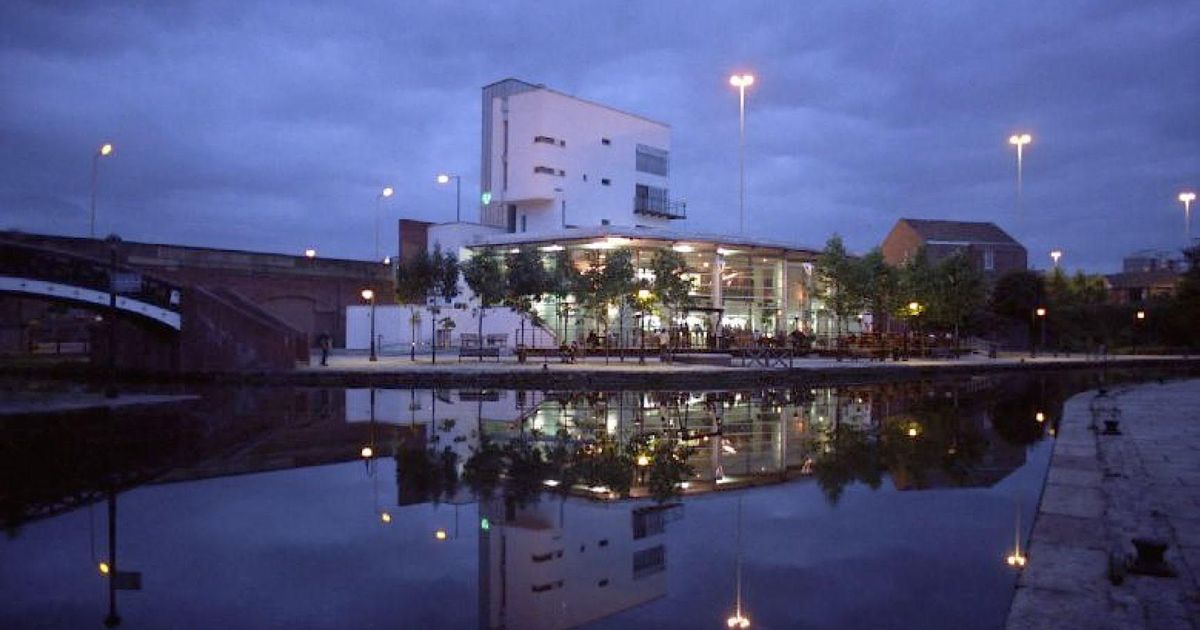The Quay Bar in Castlefield won a host of prestigious awards but was later dubbed the city’s ‘drug mecca’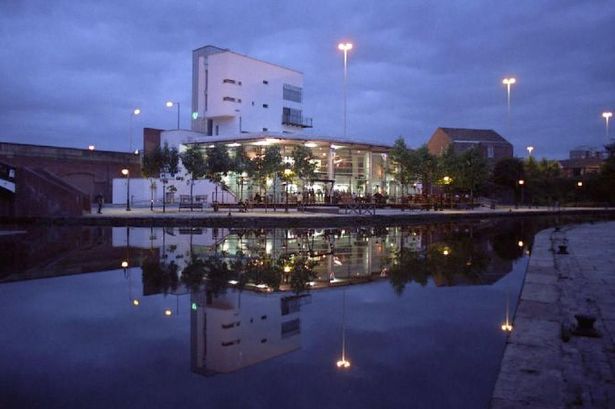 The Quay Bar in Castlefield, June 1998(Image: Aidan O’Rourke)
The Quay Bar in Castlefield, June 1998(Image: Aidan O’Rourke)
There was a time in the late 1990s when a striking new bar in Castlefield became the most celebrated nightspot in town. Yet despite being praised for its ambition and architecture, it was demolished just a decade after it opened.
Following its completion in 1998, the £2.5 million Quay Bar next to the Bridgewater Canal basin in Castlefield won numerous awards, including an MSA Design Award, RIBA Award and the Manchester Civic Society Award. It was also shortlisted for the prestigious Stirling Prize whose past winners include the Millennium Bridge in Gateshead and ‘The Gerkin’ skyscraper in London.
Designed by architects Stephenson Bell, the Civic Society Award judges praised the bar’s design saying: “Its design ethic recalls those of the 19th century when style, impact and proportion were important factors. Quay Bar is uncompromisingly contemporary to its age but makes the best use of its location, using strong and robust material to reflect the industrial heritage of its setting.”
Castlefield was once Manchester’s industrial heart and the region’s railway network centre. However, as the 20th century rolled on, canal and rail transport declined, and the area around the viaduct fell into dereliction.
The former hub of bustling industry was left to rot until 1980, when things began to change. It was designated a conservation area, and the UK’s first Urban Heritage Park was established in 1982.
 Castlefield Quay lying derelict in 1986(Image: Manchester Libraries and Local Archives)
Castlefield Quay lying derelict in 1986(Image: Manchester Libraries and Local Archives)
The decision was made to reconstruct part of the original Roman fort on excavated foundations, while redeveloping the canals and old warehouses. The city experienced a renaissance following the devastating IRA bomb in 1996, with Castlefield transforming into a trendy residential area with waterfront bars and clubs.
It was a dramatic change from the ‘no-go area’ in the 1980s to a place where celebrities, including Take That’s Jason Orange and Coronation Street’s Denise Welch, were now choosing to live.
Love Greater Manchester’s past? Sign up to our nostalgia newsletter here
When the Quay Bar opened in April 1998, it was the latest in a host of café and restaurant bars that had sprung up in the area, including Dukes 92, Atlas, and Barca, which was owned by Mick Hucknall of Simply Red.
The Quay Bar’s massive plate glass frontage stood out, overlooking the waterways. And at the weekends, it bustled with Manchester’s trendy and youthful club crowd.
 Quay Bar in Castlefield
Quay Bar in Castlefield
However, with fierce competition from competing bars and restaurants closer to the city centre, as time went on the bar found it more challenging to attract the same crowds resulting in its closure.
Urban Splash bought the building, and Quay Bar was briefly rebranded as the Modo Clubroom.
The building was then let out on an occasional basis to military theme bar operator Canteena. Before taking residence in the Quay Bar, Canteena was a 2,000-square-foot army-issue marquee set up in Castlefield every weekend, serving pan-Asian dishes and cocktails.
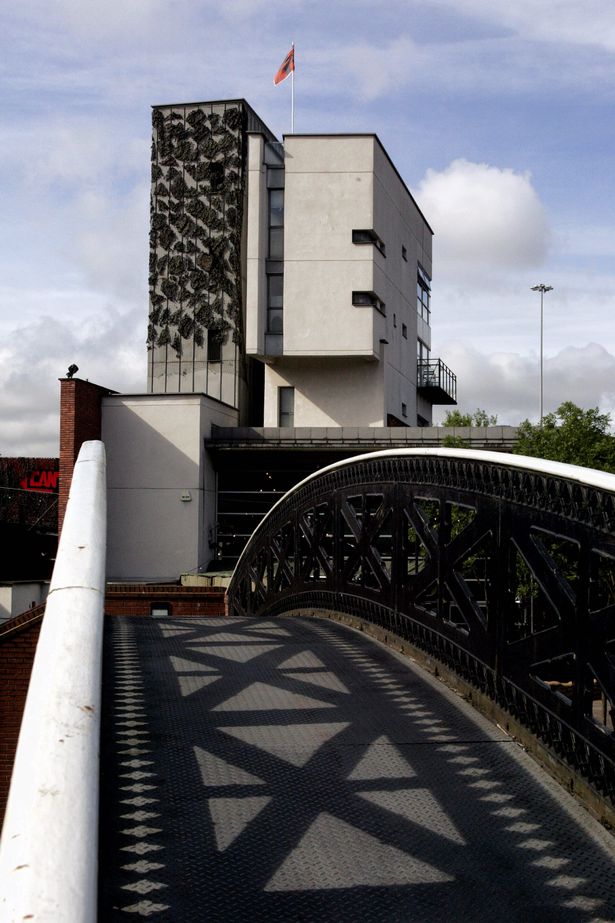 The Quay Bar won a host of top design awards
The Quay Bar won a host of top design awards
Hosting top DJs, the popular venture was awarded Bar of the Month in lad’s magazine Loaded in 1999.
Join the Manchester Evening News WhatsApp group HERE
However, in 2004, Canteena embraced the more corporate side of bar culture and set up camp within the minimalist steel and glass shell of the former Quay Bar.
The bar was strewn with camo nets and 25 tonnes of imported sandbags. There was also an armoured tank parked outside making the bar nigh impossible to miss.
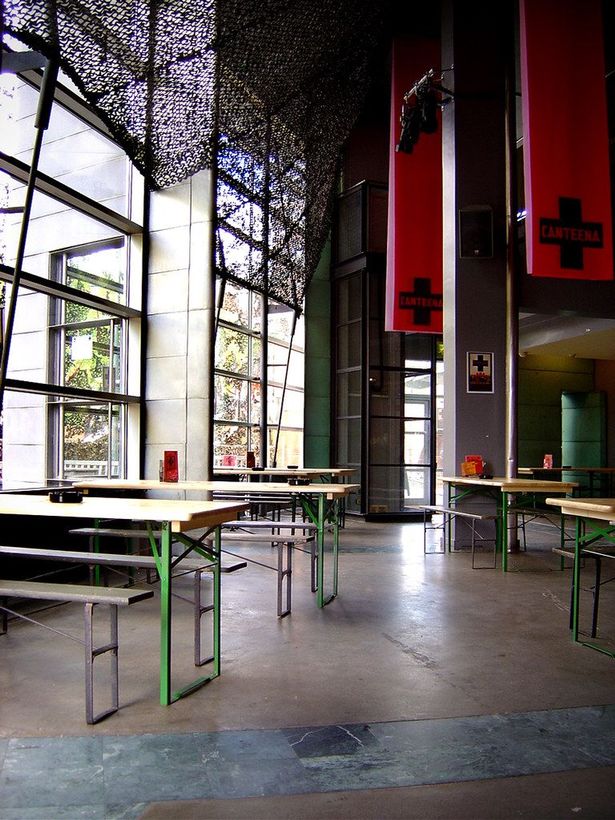 Canteena at the Quay Bar in Castlefield, Manchester. June 25, 2004(Image: Ross Bowman |toxophilite on flickr.com)
Canteena at the Quay Bar in Castlefield, Manchester. June 25, 2004(Image: Ross Bowman |toxophilite on flickr.com)
Describing the newly furnished Canteena bar in 2004, a review in the Manchester Evening News read: “Decked out in the garb of revolution; banners from the ceiling, constructionist projections and an entire small-scale military operation in the form of tanks, netting and jeeps decorating the void, it looks like the crew from M.A.S.H have popped in for a bit of impromptu filming and left their set behind.”
Yet despite winning prestigious design awards and being the toast of the town when it first opened, the building finally closed its doors in 2005. But things were about to get worse.
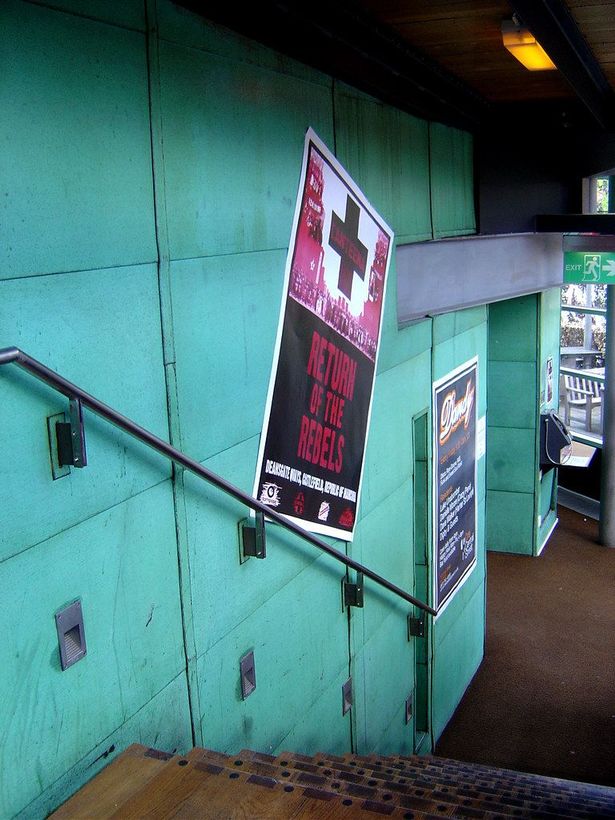 Canteena at the Quay Bar in Castlefield, Manchester. June 25, 2004(Image: Ross Bowman |toxophilite on flickr.com)
Canteena at the Quay Bar in Castlefield, Manchester. June 25, 2004(Image: Ross Bowman |toxophilite on flickr.com)
Urban Splash had planned to use the site to build a distinctive tower block to rival No1 Deansgate, but the plans fell through and the company sold the site to another developer.
In 2006, under the headline ‘Plea to call time on city drug mecca’, the Manchester Metro newspaper reported that the now-abandoned building had been taken over by squatters, drug addicts and rough sleepers.
The previous September, the building had been set on fire three times, and the one-time award-winning Quay Bar had been reduced to a burned-out, boarded-up shell.
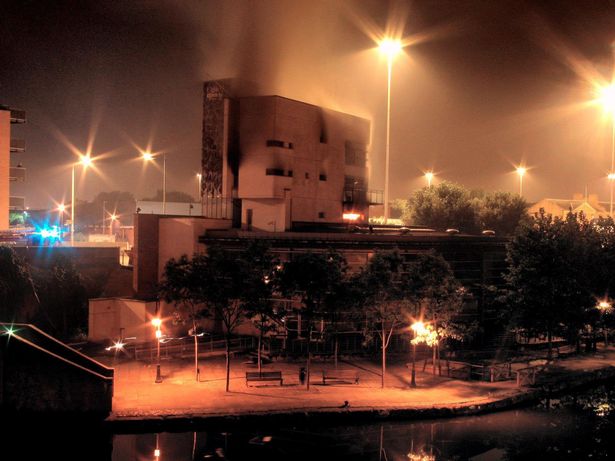 Former Quay Bar/Canteena on fire in September 2005
Former Quay Bar/Canteena on fire in September 2005
City Centre Cllr Marc Ramsbottom demanded: “Something needs to be done with the building very quickly,” adding that since the bar closed, it had become a “shooting gallery” for heroin addicts.
The Cllr added: “It needs to be demolished and the site redeveloped. I don’t think anybody would mourn its loss.”
In 2007, just over a decade after opening, the once-award-winning building was torn down.
Speaking to the Architects Journal in 2007, the building’s architect, Stephen Bell, said: “It was a sometimes heart-wrenching uphill struggle to convince the client (a pub-owning brewer from the Midlands) to allow us to take the design intentions through to completion.
“It was a radical contemporary proposition in the middle of a very significant conservation area.
“The battle to deliver the building took a few years off my life, and it was the only bar to ever reach the Stirling Prize shortlist, so it’s doubly upsetting to see it ripped apart.”
Get news, views and analysis of the biggest stories with the daily Mancunian Way newsletter – sign up here
